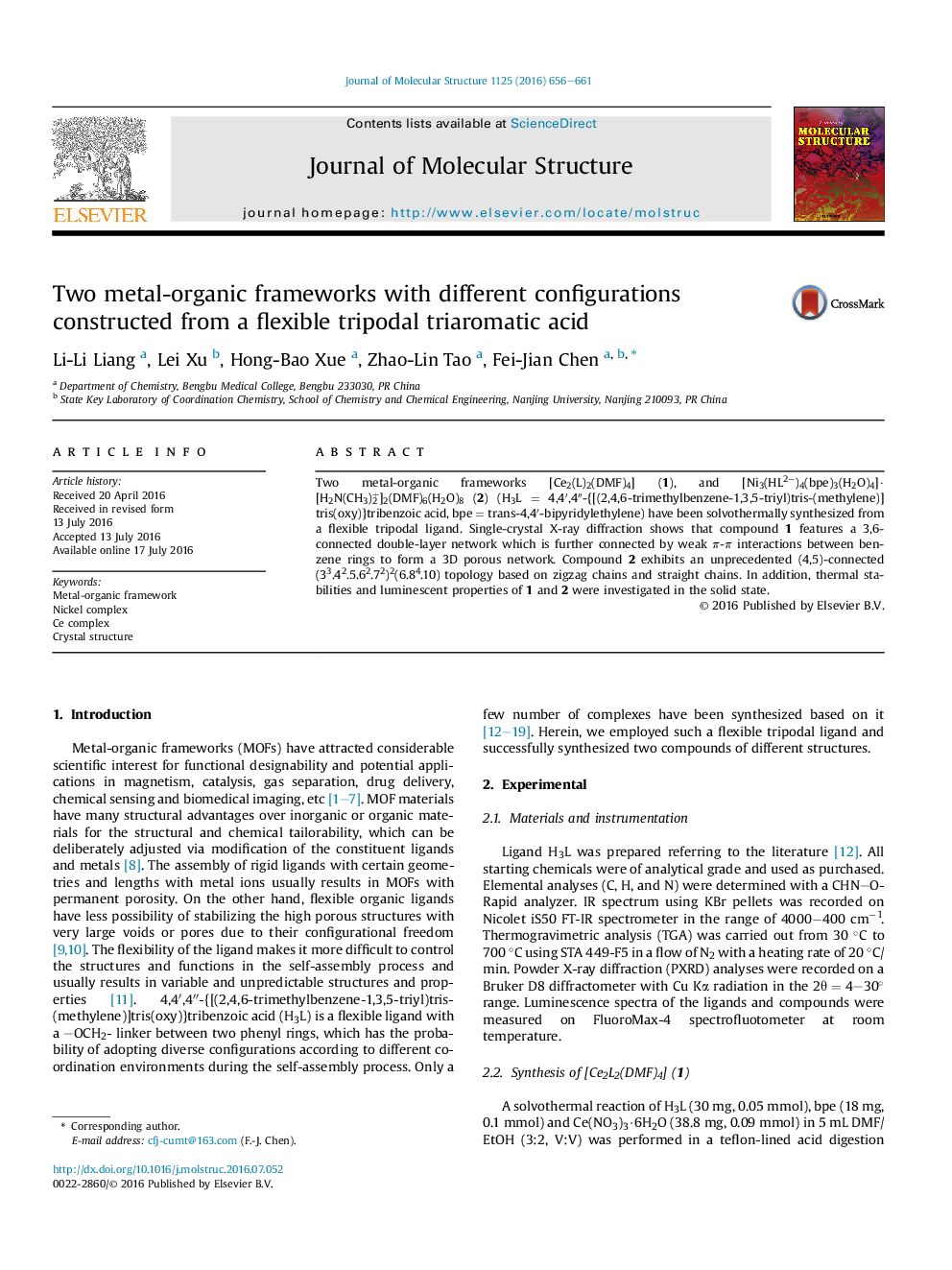| Article ID | Journal | Published Year | Pages | File Type |
|---|---|---|---|---|
| 1400982 | Journal of Molecular Structure | 2016 | 6 Pages |
•Complex 1 displays a unique 3,6-connected double-layer network.•Complex 2 exhibits the first example of (33.42.5.62.72)2(6.84.10) topology.•The configurations of the H3L ligand in 1 and 2 differ a lot.•Luminescent properties of the two complexes were investigated.
Two metal-organic frameworks [Ce2(L)2(DMF)4] (1), and [Ni3(HL2−)4(bpe)3(H2O)4]·[H2N(CH3)2+]2(DMF)6(H2O)8 (2) (H3L = 4,4′,4″-{[(2,4,6-trimethylbenzene-1,3,5-triyl)tris-(methylene)] tris(oxy)}tribenzoic acid, bpe = trans-4,4′-bipyridylethylene) have been solvothermally synthesized from a flexible tripodal ligand. Single-crystal X-ray diffraction shows that compound 1 features a 3,6-connected double-layer network which is further connected by weak π-π interactions between benzene rings to form a 3D porous network. Compound 2 exhibits an unprecedented (4,5)-connected (33.42.5.62.72)2(6.84.10) topology based on zigzag chains and straight chains. In addition, thermal stabilities and luminescent properties of 1 and 2 were investigated in the solid state.
Graphical abstractFigure optionsDownload full-size imageDownload as PowerPoint slide
